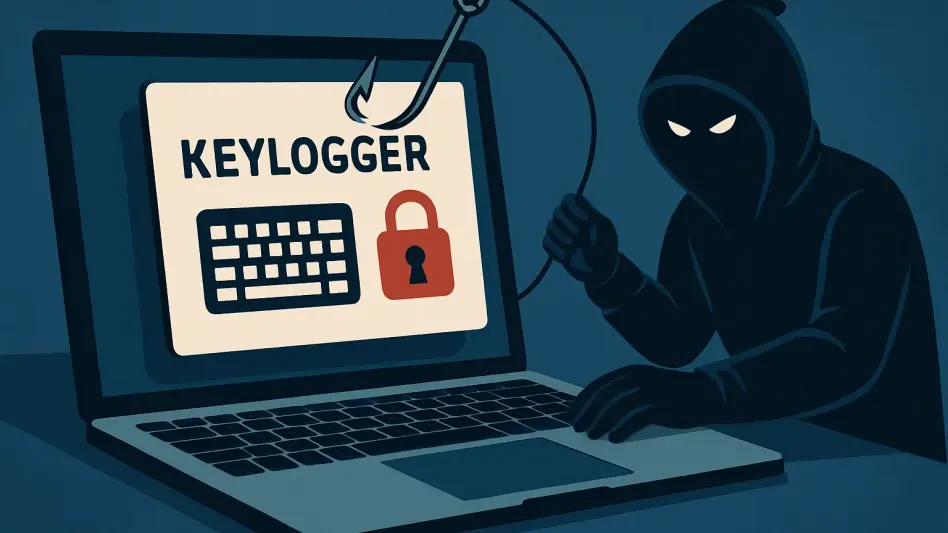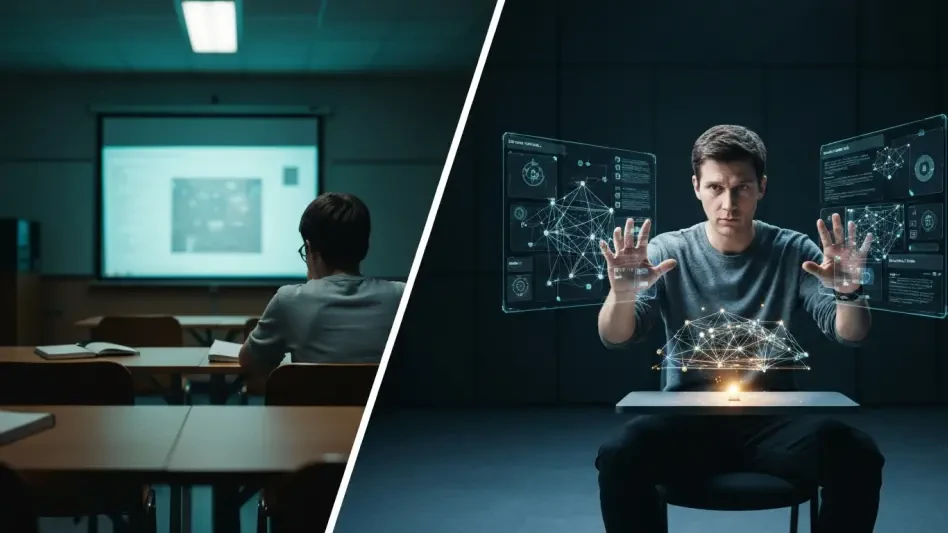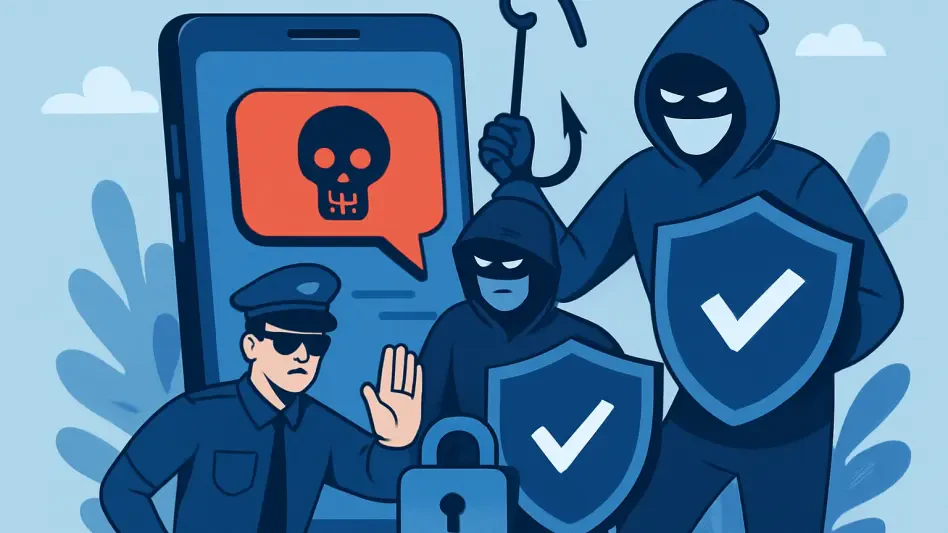In an era where digital threats evolve at an alarming pace, a familiar yet dangerous malware has resurfaced with renewed vigor, targeting unsuspecting users through highly deceptive methods. The VIP keylogger, a notorious tool for stealing sensitive data, has made a comeback with a sophisticated spear-phishing campaign that showcases the ingenuity of modern cybercriminals. This malware, once known for its stealthy ability to log keystrokes and harvest credentials, now employs advanced delivery mechanisms to infiltrate systems. By leveraging meticulously crafted phishing emails, threat actors trick users into unleashing a payload designed to evade even robust security measures. The resurgence of this threat serves as a stark reminder of the persistent challenges in cybersecurity, where human error often becomes the weakest link. As organizations scramble to protect their assets, understanding the intricacies of this campaign is crucial to building stronger defenses against such insidious attacks.
Unveiling the Spear-Phishing Delivery Mechanism
The latest iteration of the VIP keylogger campaign begins with a cunning spear-phishing strategy that preys on trust and curiosity. Cybercriminals distribute emails containing a ZIP archive misleadingly named to resemble a legitimate payment receipt. Inside this archive lies an executable file disguised as a PDF, which, when opened, triggers a devastating chain of events. Unlike broader phishing attempts, these emails are tailored to appear credible, often mimicking communications from trusted entities. This targeted approach increases the likelihood of users falling for the ruse, as the attachment seems relevant to their daily tasks. Once activated, the executable deploys an AutoIt-based injector, a shift from older methods, to silently install the malware. This initial step highlights how social engineering remains a powerful tool in the arsenal of threat actors, exploiting human psychology to bypass technical safeguards and gain access to secure environments.
Further examination of this delivery method reveals the meticulous attention to detail in evading detection. The use of a ZIP archive to conceal the malicious executable demonstrates an understanding of common email security filters that may flag standalone executables. By presenting the file as a benign document, attackers capitalize on the tendency of users to overlook subtle discrepancies in file naming. Additionally, the spear-phishing emails often contain personalized elements, such as references to specific transactions or urgent payment issues, which heighten their authenticity. The transition to AutoIt scripting for injection purposes marks a notable evolution, as it allows for greater obfuscation and complicates efforts by traditional antivirus software to identify the threat. This layered deception underscores the need for enhanced email security protocols and user training to recognize and resist such manipulative tactics before they can cause harm.
Technical Sophistication in Deployment and Evasion
Delving into the technical underpinnings of the VIP keylogger, its deployment strategy showcases a remarkable level of sophistication aimed at staying under the radar. Once the malicious executable is activated, it employs in-memory execution to decrypt and run encrypted files without leaving easily detectable traces on the disk. This technique, paired with a custom XOR-based decryption function, ensures that the payload remains hidden from conventional security scans. The malware also uses process hollowing, masquerading as legitimate system processes to blend into normal operations. Persistence is achieved through a Visual Basic Script placed in the Startup folder, guaranteeing that the keylogger reactivates with each system reboot. These combined tactics illustrate a deliberate effort to maintain long-term access to compromised systems while avoiding the scrutiny of endpoint protection tools.
Beyond deployment, the keylogger’s core functionalities remain as dangerous as ever, enhanced by updated evasion mechanisms. It logs keystrokes, steals credentials from popular browsers such as Chrome, Edge, and Firefox, and monitors clipboard activity to capture sensitive data. Data exfiltration occurs through SMTP protocols, with communication routed to a command-and-control server for remote access by attackers. The integration of AutoIt’s obfuscation capabilities further complicates detection, as scripts are compiled into executables that resist static analysis. This multi-stage approach to data theft and persistence reflects a broader trend in malware development, where cybercriminals continuously adapt to counter advancements in cybersecurity. Security teams must therefore prioritize behavioral analysis and dynamic threat detection to identify anomalies that static signatures might miss, ensuring a more proactive stance against such stealthy intrusions.
Strengthening Defenses Against Evolving Threats
As the VIP keylogger campaign demonstrates, the convergence of social engineering and technical innovation poses a formidable challenge to cybersecurity. Organizations must adopt a multi-layered defense strategy to mitigate the risks posed by such advanced threats. Enhanced email filtering systems can help identify and block suspicious attachments before they reach users, while endpoint detection and response solutions offer real-time monitoring for unusual activity. Equally important is the role of user awareness training, which equips employees to recognize the hallmarks of phishing attempts, such as unexpected urgency or unfamiliar senders. By fostering a culture of vigilance, businesses can reduce the likelihood of successful initial infections, disrupting the attack chain at its earliest stage and protecting critical data from compromise.
Reflecting on the impact of this campaign, it becomes evident that past efforts to combat malware require constant adaptation to match the ingenuity of threat actors. Looking ahead, security professionals are encouraged to leverage actionable intelligence, such as Indicators of Compromise (IOCs) like MD5 hashes and server IPs, to fortify their networks against similar intrusions. Collaboration across industries to share threat intelligence emerges as a vital step in staying ahead of evolving tactics. Moreover, investing in advanced tools that focus on behavioral patterns rather than known signatures proves essential in detecting stealthy payloads. As cybercriminals continue to refine their methods, the cybersecurity community must prioritize innovation and education, ensuring that both technology and human defenses evolve in tandem to address the ever-changing landscape of digital threats.








